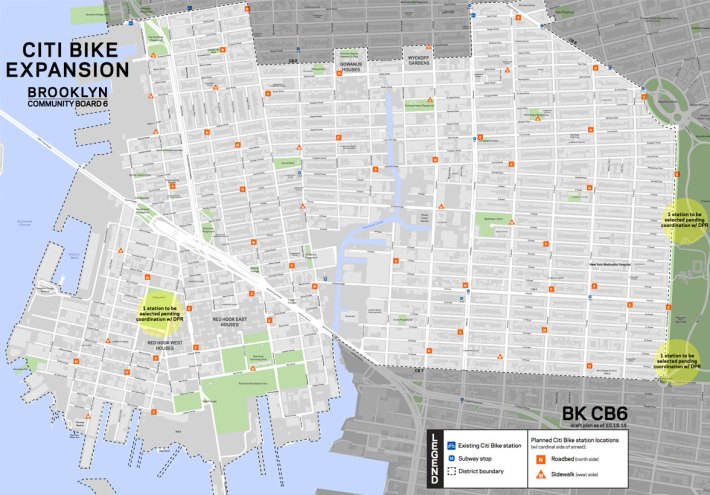
DOT unveiled its latest Citi Bike expansion map last week, and the stations look significantly more spread out than stations in the rest of the system.
Spread-out stations are a problem for bike-share users because people have to walk farther to make trips, and that costs time. The National Association of City Transportation Officials recommends 28 stations per square mile -- and the city's contract with Citi Bike operator Motivate stipulates the same metric -- but NYC DOT has been thinning out stations in its expansion zones. The city wants to cover the geographic area described in the bike-share contract, while Motivate doesn't want to supply more than the 378 additional stations it's required to. The result is a less effective system for everyone.
With 62 stations covering the 3.1 square miles of Brooklyn Community Board 6 -- which includes Red Hook, Park Slope, and everything in between -- the station density works out to 20 per square mile. As Citi Bike expands into Upper Manhattan, western Queens, and more of Brooklyn by 2017, these are the station densities New Yorkers can expect in the absence of a new strategy from DOT and/or Motivate.
DOT officials told the CB 6 committee that more stations can be added after the initial rollout. But it could be a long time before those gaps get filled in. When the current round of expansion wraps up in 2017, there will be a lot of ground to cover with infill stations plus huge pressure to keep expanding outward.
Ironically, the one thing Citi Bike had going for it consistently from the very beginning -- a convenient network where a station was always a short walk away -- is deteriorating just as everything else comes together. Citi Bike is finally on the rebound thanks to a thorough overhaul of its equipment and software. How long will the good times last if every expansion fails to deliver the convenience bike-share users have come to expect?





